Julius AI vs ChatGPT: I Found the Clear Winner
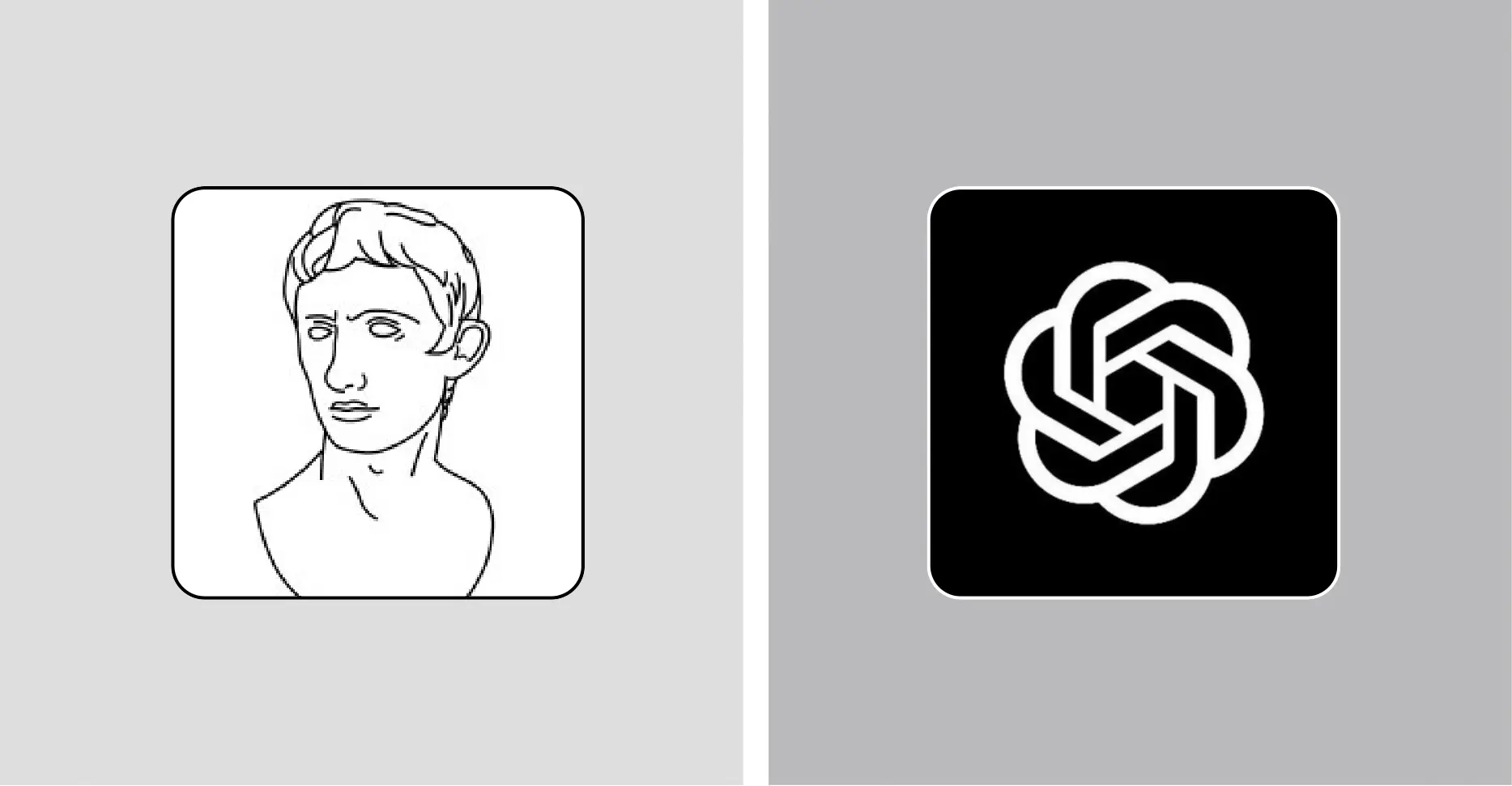
Let’s go back about 3–4 years ago, before the mainstream adoption of LLMs.
If you’d given me a spreadsheet back then and asked me to analyze it and create some cool, useful charts, I would’ve had a hard time admitting I couldn’t do it.
That’s because I wasn’t a data analyst at that point.
I’m not one now either.
But if you give me that same task today, I can surprise you in unexpected ways.
Thanks to large language models (like ChatGPT) and specialized AI SaaS tools (like Julius AI), it’s easier than ever for anyone to become anything—including a seriously good data analyst.
In this comparison guide, I’m evaluating ChatGPT, a powerful general-purpose AI chatbot, against Julius AI, a specialized AI data analyst trained on Python and R.
By the end of this article—or even midway through—you’ll know exactly which tool to pay for and which one performs specific tasks better than the other.
KEY TAKEAWAYS

Julius AI is the clear choice if you work with data regularly. It’s purpose-built for data analysis with Notebooks for reusable workflows, Data Connectors for live database access, handles files up to 32GB, and creates 40+ chart types. Plus access to the latest AI models like Claude 4 and GPT-5.

ChatGPT excels when you need to transform thoughts into words. It’s your writing partner, not just a tool. While it can perform basic data analysis, its real strength lies in generating, refining, and adapting text.
Julius AI vs. ChatGPT at a glance
Feature | Julius AI | ChatGPT |
Core Purpose | Data analysis specialist | General-purpose text generator |
Primary Strength | Turning data into insights | Turning thoughts into words |
Programming Languages | Python and R support | Primarily Python for data tasks |
File Handling | Up to 32GB files | Max 512MB (approx. 50MB for spreadsheets) |
Memory Options | 8GB standard, 32GB high-memory containers | Standard memory allocation |
Visualization | 40+ chart types with custom themes | Basic charts, limited customization |
Customization | Notebook Templates (process-oriented) | Custom GPTs (role-oriented) |
Model Access | Multiple models (GPT-5, Claude 4, etc.) | OpenAI models only |
Collaboration | Thread sharing via links | Team workspaces, chat sharing |
Starting Price | $20/month (Plus) | $20/month (Plus) |
Best For | People who analyze data regularly | People who write or brainstorm regularly |
Unique Feature | Data Connectors for live database access | Better text adaptation and memory |
Julius AI overview
Available on web, Android and iOS (iPhone and iPad).
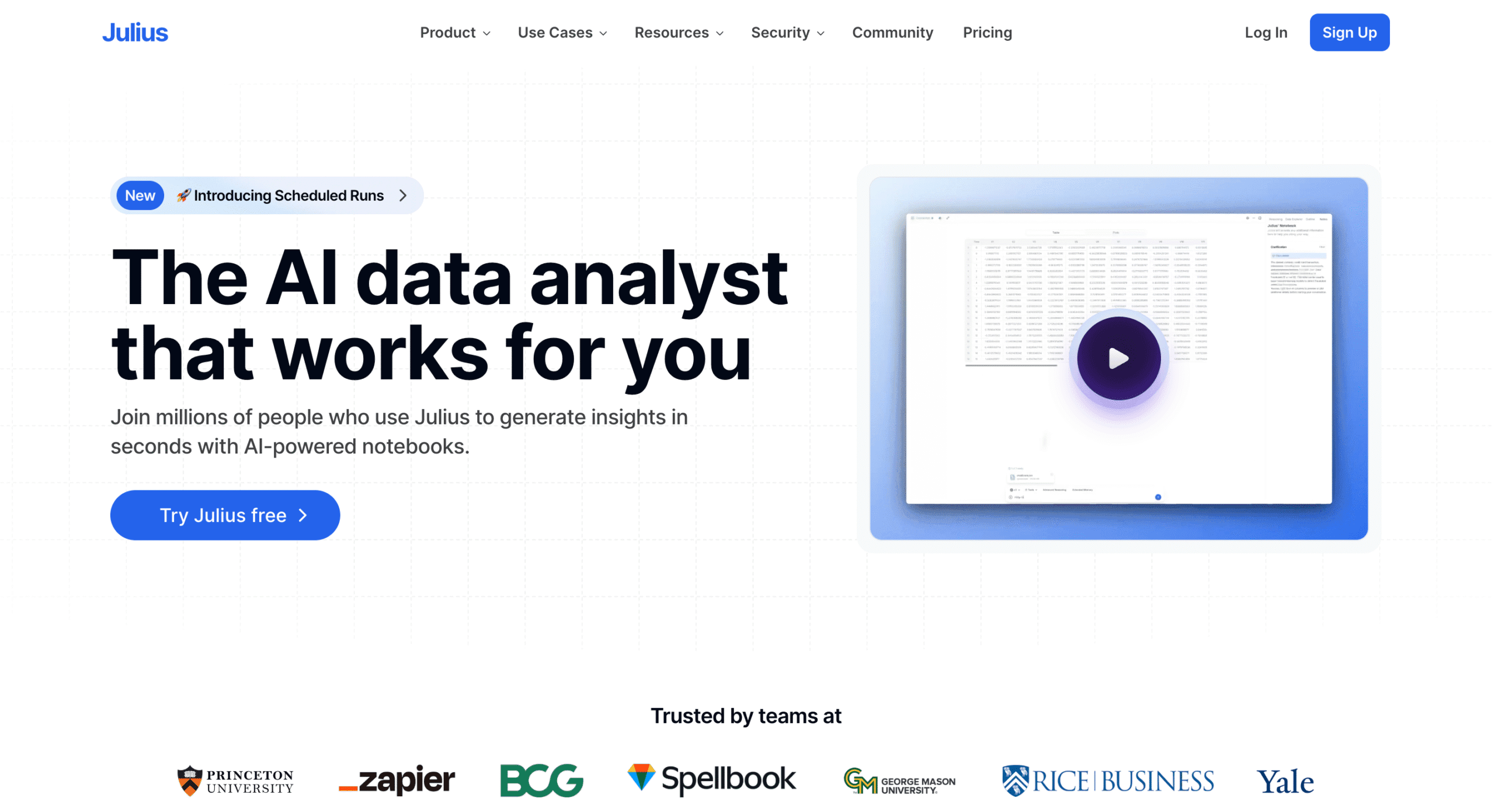
What I like about Julius AI
What I don’t like about Julius AI
Julius AI is what happens when you build an AI specifically for data people.
Most AI tools can analyze data. Julius lives there.
The difference shows up immediately when you upload a spreadsheet. While other tools are figuring out what you want, Julius is already running Python code in the background.
But here’s what’s new and interesting: Julius isn’t just a chat interface anymore.
Notebooks are the game changer.
Think of them as your personal recipe book for data analysis. Instead of explaining the same analysis steps over and over, you build it once and run it forever.
Each Notebook contains different types of cells:
Notebook Templates solve the blank page problem.
Instead of starting from scratch, grab a template for customer segmentation, monthly reporting, or trend analysis. Modify it for your needs.
Data Connectors eliminate the most tedious part of data analysis: the export-upload dance.
Connect directly to your PostgreSQL database, BigQuery warehouse, or Snowflake instance. Your data never moves. Julius queries it where it lives.
The model selection keeps expanding. Claude 4, GPT-5, and other cutting-edge models appear in Julius before most other platforms.
You’re not locked into one AI company’s capabilities.
If you analyze data regularly—not occasionally, but regularly—Julius probably makes sense. The initial complexity pays dividends when you’re running the same type of analysis for the tenth time.
Further reading: Julius AI Review 2025: Is It the Best AI Data Analyst?
ChatGPT overview
Available on web, Android, iOS, Windows and Mac.
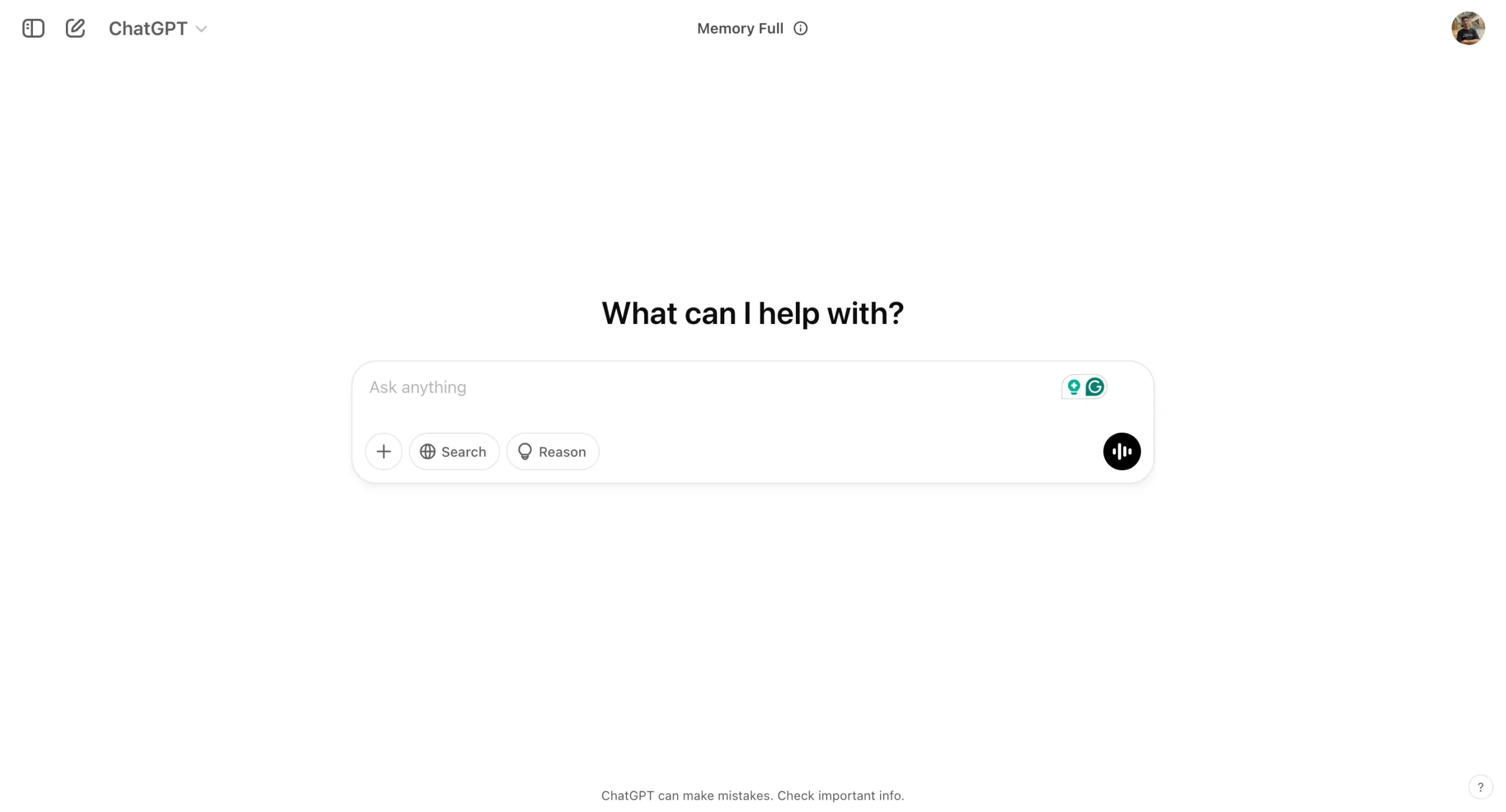
What I like about ChatGPT
What I don’t like about ChatGPT
ChatGPT is a general-purpose AI assistant that understands what you write and responds with remarkably human-like text.
I’ve spent countless hours with ChatGPT. It’s good at many things, but not specialized in any particular domain.
This matters when we talk about data analysis.
ChatGPT knows about data concepts—it can explain regression analysis or tell you how to create a pivot table. But there’s a difference between knowing about something and being built specifically to do it.
When I upload a spreadsheet to ChatGPT, it tries its best.
Sometimes that’s enough.
It can generate basic charts and straightforward analysis. However, I’ve found its capabilities hit walls quickly with complex data tasks.
The interface makes a difference too. ChatGPT presents everything through conversation. If you want to adjust a visualization, you’re describing the changes rather than directly manipulating them.
What ChatGPT does phenomenally well is translate your vague intentions into specific questions.
“Make this data look nice” becomes “Do you want a line chart showing trends over time, or would a comparison between categories be more helpful?”
You get access to different models depending on your subscription. GPT-4o is impressively capable, while GPT-3.5 handles simpler tasks for free users.
ChatGPT’s greatest strength is its flexibility. You can pivot from data analysis to writing a business plan to debugging code—all in the same conversation.
Unlike Julius AI, ChatGPT wasn’t built specifically for data. But its broad capabilities make it useful in surprisingly many situations, even ones involving spreadsheets.
Both are surprisingly easy to use
Julius AI and ChatGPT share a crucial trait: beginners can figure them out fast.
I’ve noticed both use plenty of whitespace. Whitespace isn’t just aesthetic. It helps you find what you need without feeling overwhelmed.
Julius AI puts more on the screen than ChatGPT does.
Their home screen has three distinct zones.
On the left, you’ll find your conversation history, and settings.
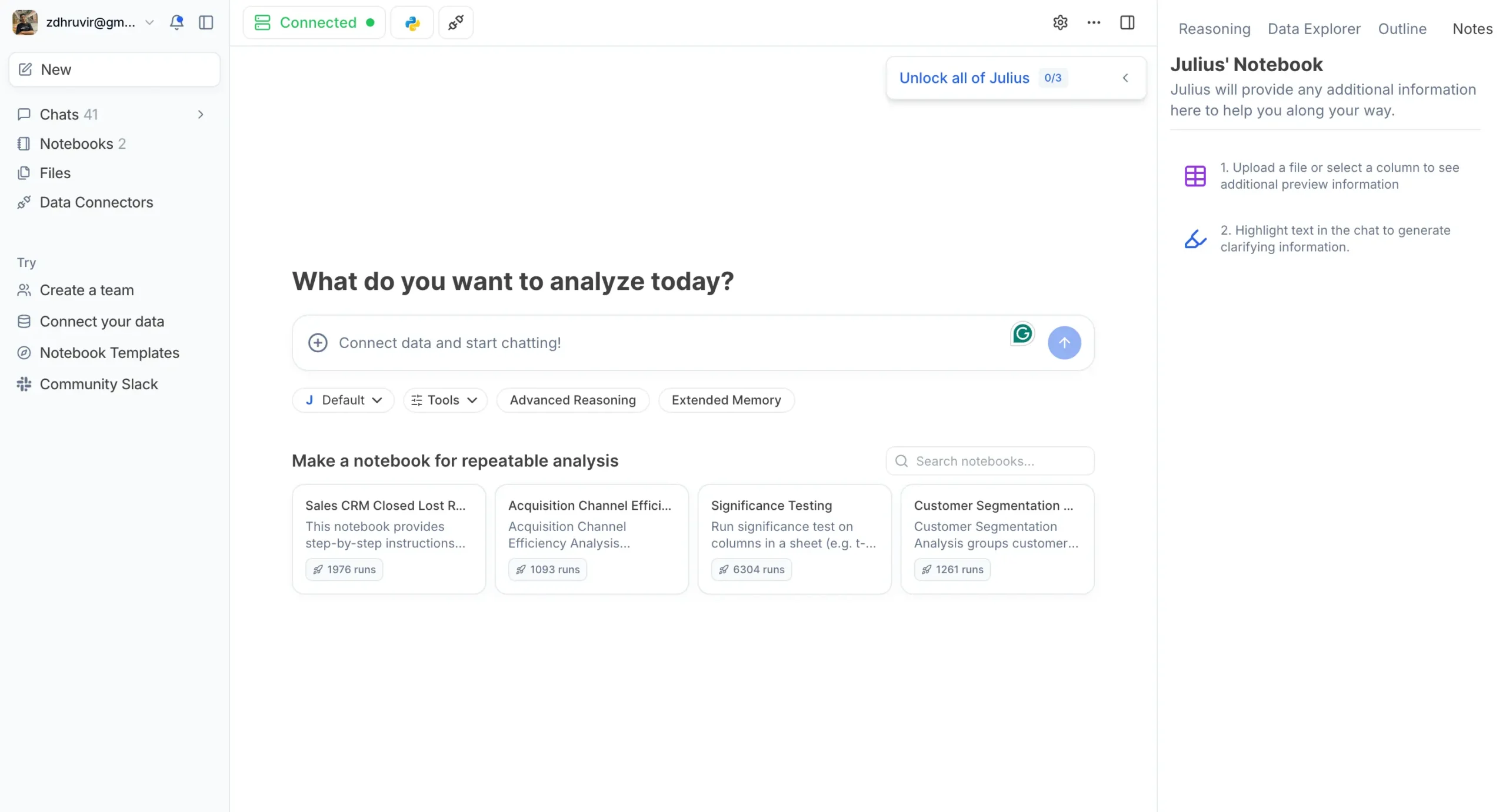
The middle holds your chat interface and those pre-built templates they call Notebook Templates.
The right sidebar contains their workspace—essentially a notepad where Julius plans responses before answering you.
ChatGPT takes a different approach. It’s deliberately minimal.
You get a clean chat box in the center with almost nothing to distract you. The left sidebar shows your recent conversations and those custom GPTs you might have created or used.
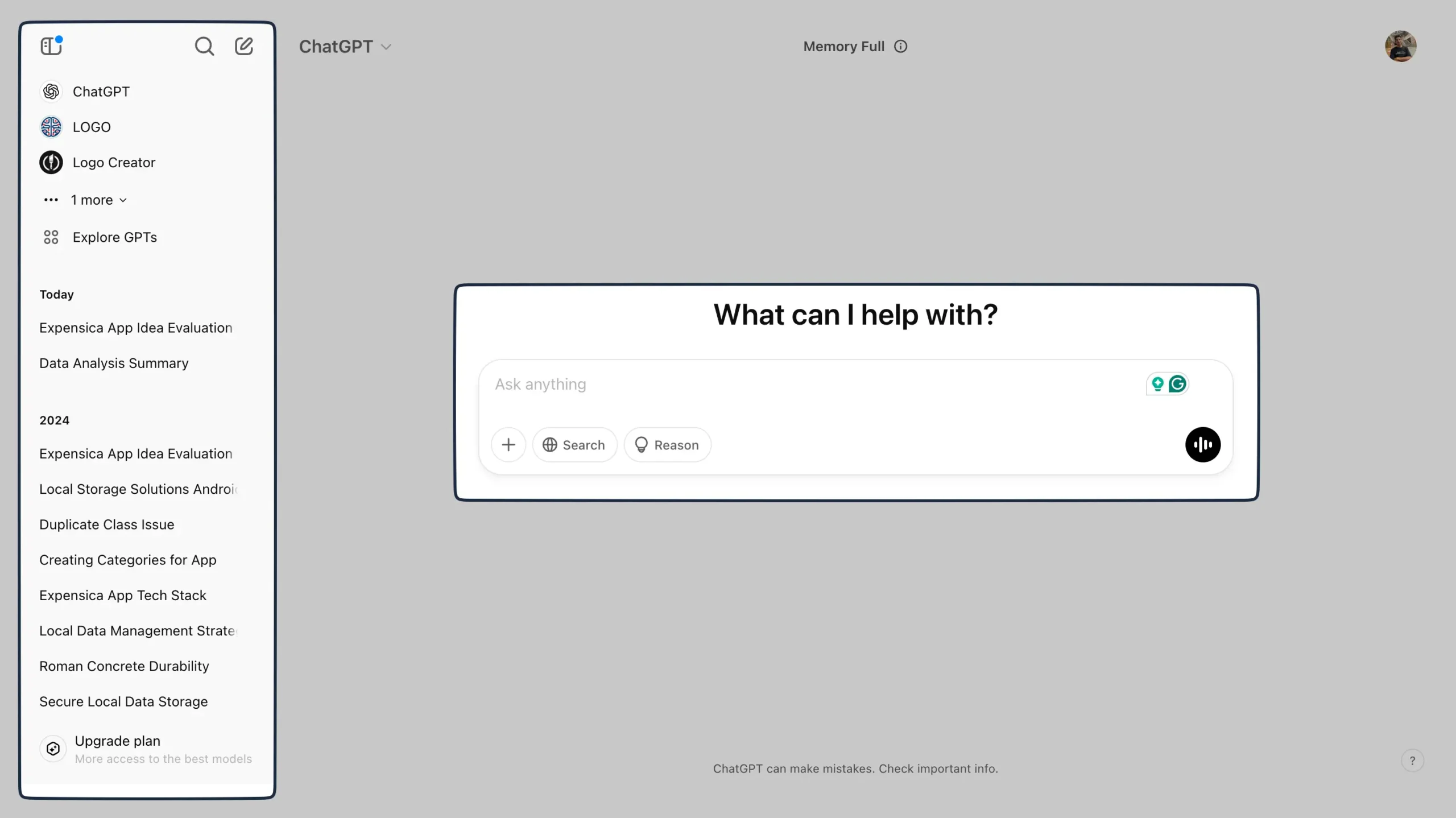
You’d think Julius’s busier interface would be harder to learn, but that wasn’t my experience. The layout makes intuitive sense once you start using it.
The real test of interface design isn’t how it looks, but how quickly you can do what you came for.
Both pass this test.
You’ll be having productive conversations within minutes of signing up.
Julius AI specializes in data analysis and visualization
Tool builders face a choice: build something general that does many things adequately, or something focused that does one thing exceptionally well.
Julius AI took the second path.
If you work with data regularly, Julius beats ChatGPT. Not by a little—by a lot.
Julius speaks both Python and R natively. ChatGPT mainly uses Python.
Why does this matter? R dominates statistical analysis. Python rules data manipulation. Having both is like having two specialists instead of one generalist.
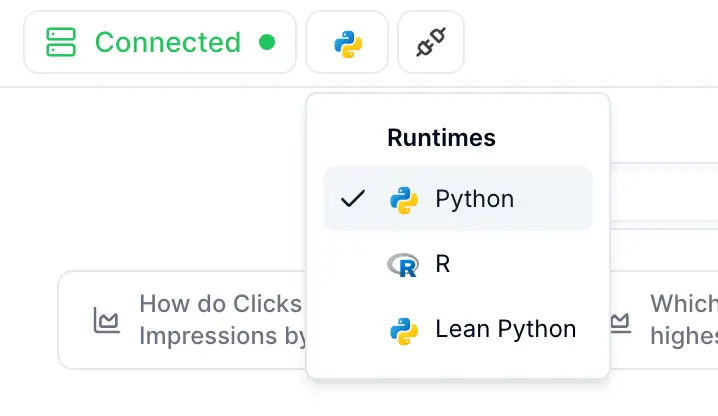
But the language advantage is just the start. ChatGPT caps spreadsheets at ~50MB. Julius handles 32GB files. This isn’t just bigger numbers. It’s the difference between analyzing samples and analyzing everything.
Julius uses high-RAM containers to make this work:
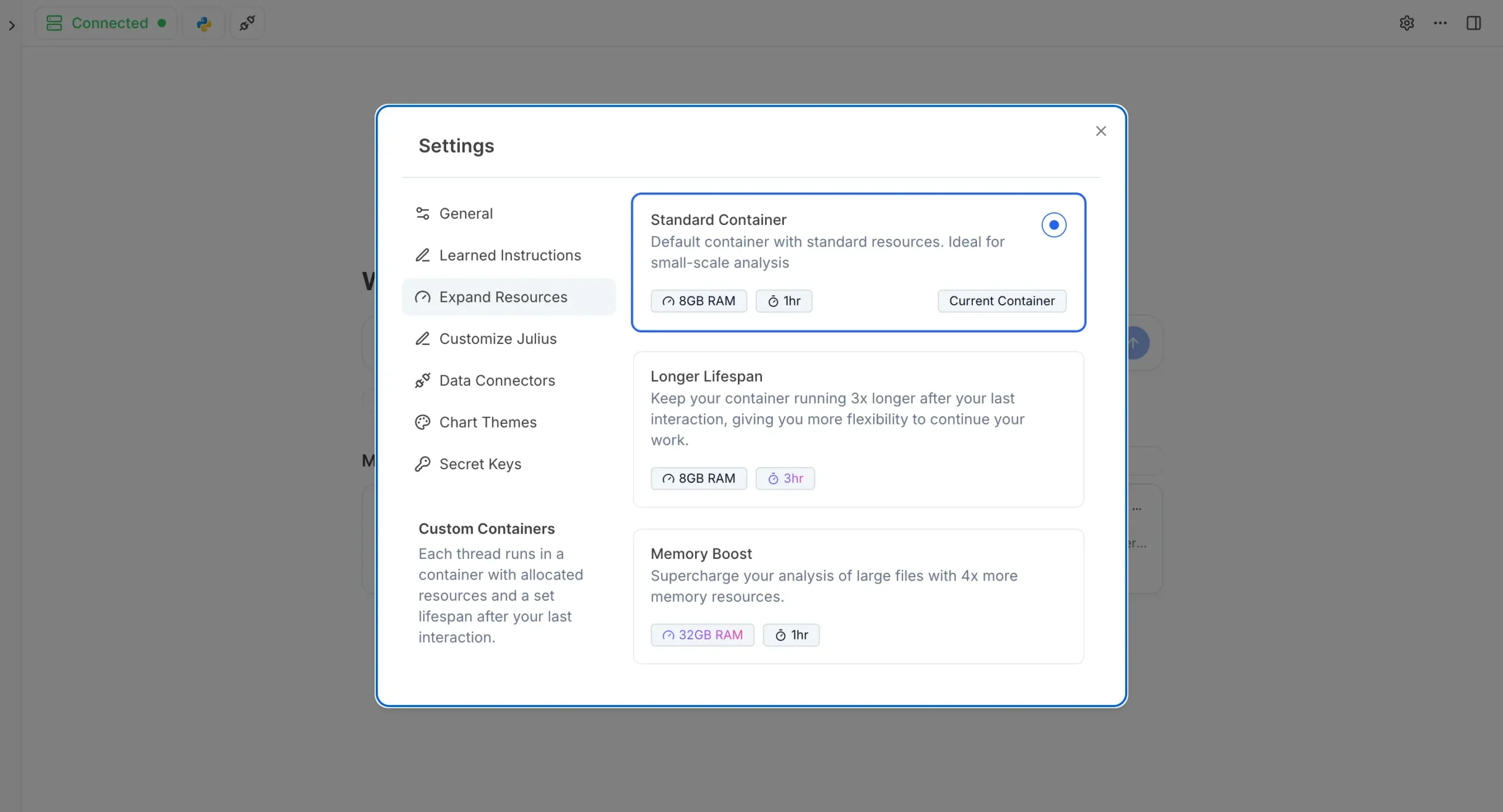
Here’s where things get interesting. You don’t need to upload files anymore. Connect Julius directly to PostgreSQL, BigQuery, or Snowflake. Your data stays in your warehouse. Julius queries it live.
The visualization capabilities matter too. Julius creates 40+ chart types. Interactive ones. Animated ones. Charts that don’t look like they escaped from Excel 2003.
Custom themes match your company branding. Sounds trivial until you’re presenting to executives.

I tested both tools with website traffic data by country. ChatGPT analyzed the data and created a basic chart. But when I wanted changes, I had to describe them in words and hope it understood.
Julius gave me exactly what I asked for. Interactive charts. Custom styling. Export options.
With ChatGPT, analysis happens in a black box.
Julius shows you everything through Data Explorer. See every data transformation. Export intermediate results. Filter and manipulate tables in real time.
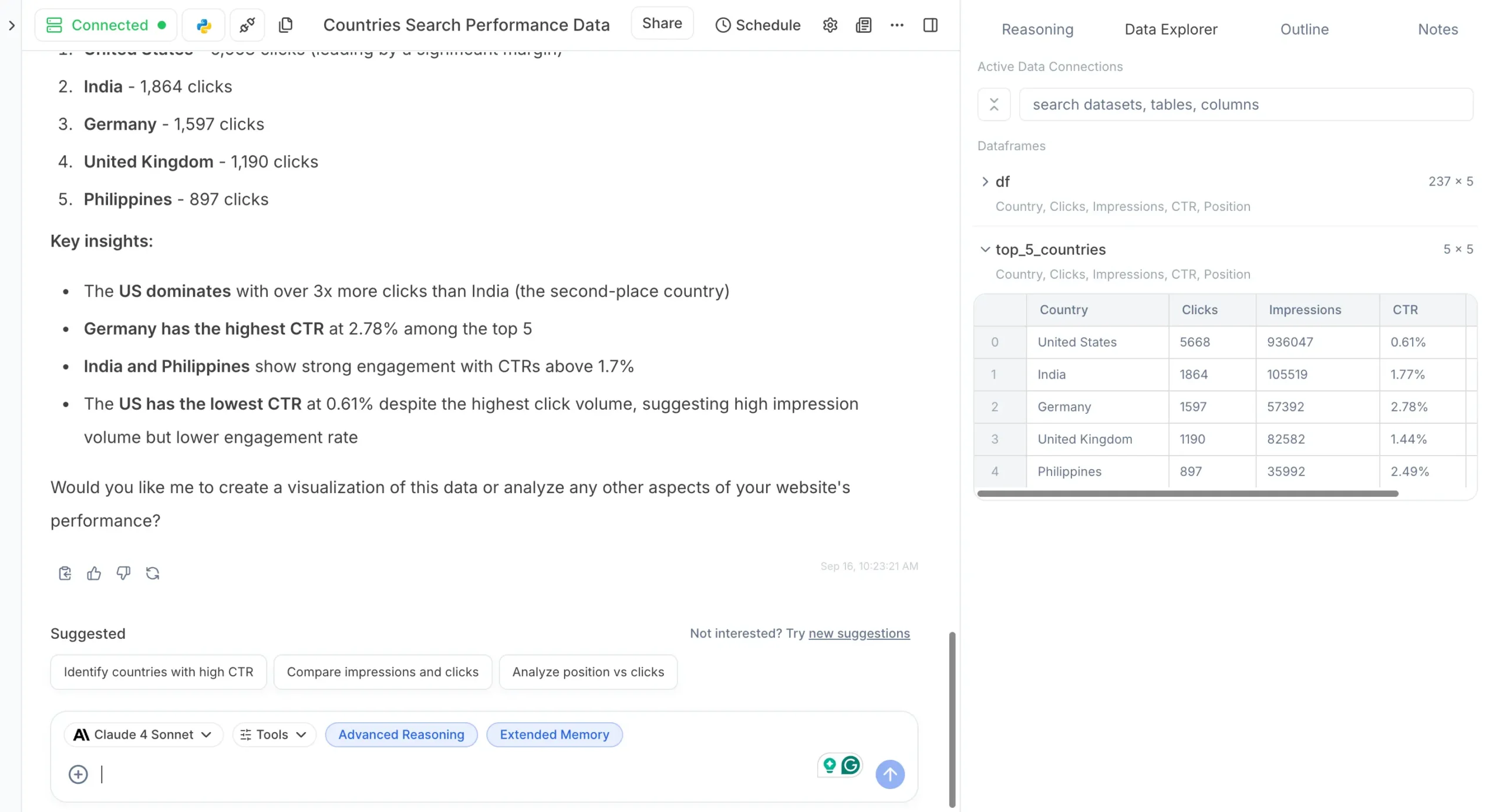
The biggest difference: Julius lets you build reusable analysis workflows. Create a monthly sales report once. Run it automatically forever. Share it with your team. Schedule it to run and email results.
The best part?
Let’s say you are certain about the specific type of visualization you want to create.
In that case, just upload your spreadsheet and toggle from Table to Plots and instantly create the visualization you want.
ChatGPT makes you start from scratch every time.
One tool can technically do data work. The other was built for it. If data analysis is your job, not just an occasional task, Julius is the obvious choice.
ChatGPT excels at text-to-text generation tasks
ChatGPT turns thoughts into words better than almost anything else I’ve seen, besides Claude.
This is its natural habitat.
While Julius AI can analyze data, ChatGPT transforms language itself.
What separates ChatGPT from other text generators is its adaptability. Tell it the first draft sounds too formal, and it’ll make it casual. Say you need more technical detail, and it adds it.
It’s like having a writing partner who instantly gets what you mean.
Most writing tools are single-purpose. A grammar checker fixes mistakes. A thesaurus suggests alternatives. ChatGPT does these things while also generating complete drafts.
What makes ChatGPT particularly useful is its memory.

Start writing a marketing report, and it remembers your brand voice throughout. Ask it to continue a story, and it maintains the characters and plot.
It isn’t perfect. It sometimes invents facts or misunderstands subtle requests. But even its mistakes are useful starting points.
If your primary need is turning prompts into polished text, ChatGPT is the better choice. Its specialized focus on this task gives it an edge that Julius’s collection of models can’t match.
Both allow for basic collaboration
Collaboration isn’t just a checkbox feature. It’s how most valuable work happens now.
Both Julius AI and ChatGPT offer collaboration options, but they work differently in practice.
Julius lets you share threads via links.
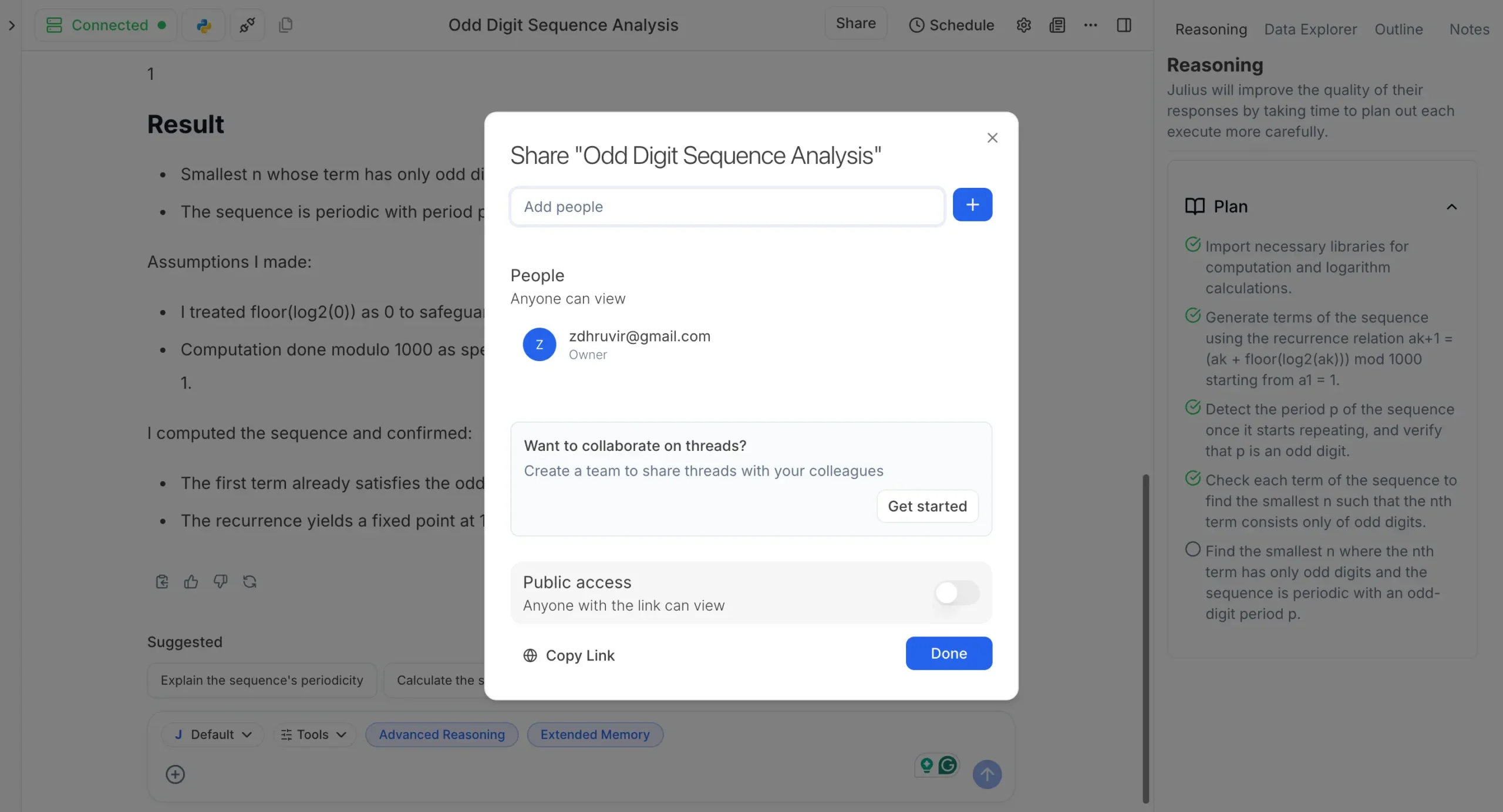
This seems simple until you realize what it enables: you can create analysis workflows that colleagues can view and learn from.
There’s something powerful about watching someone else’s thought process unfold.
ChatGPT Team takes a different approach. They’ve built a workspace model with admin controls and team management features.
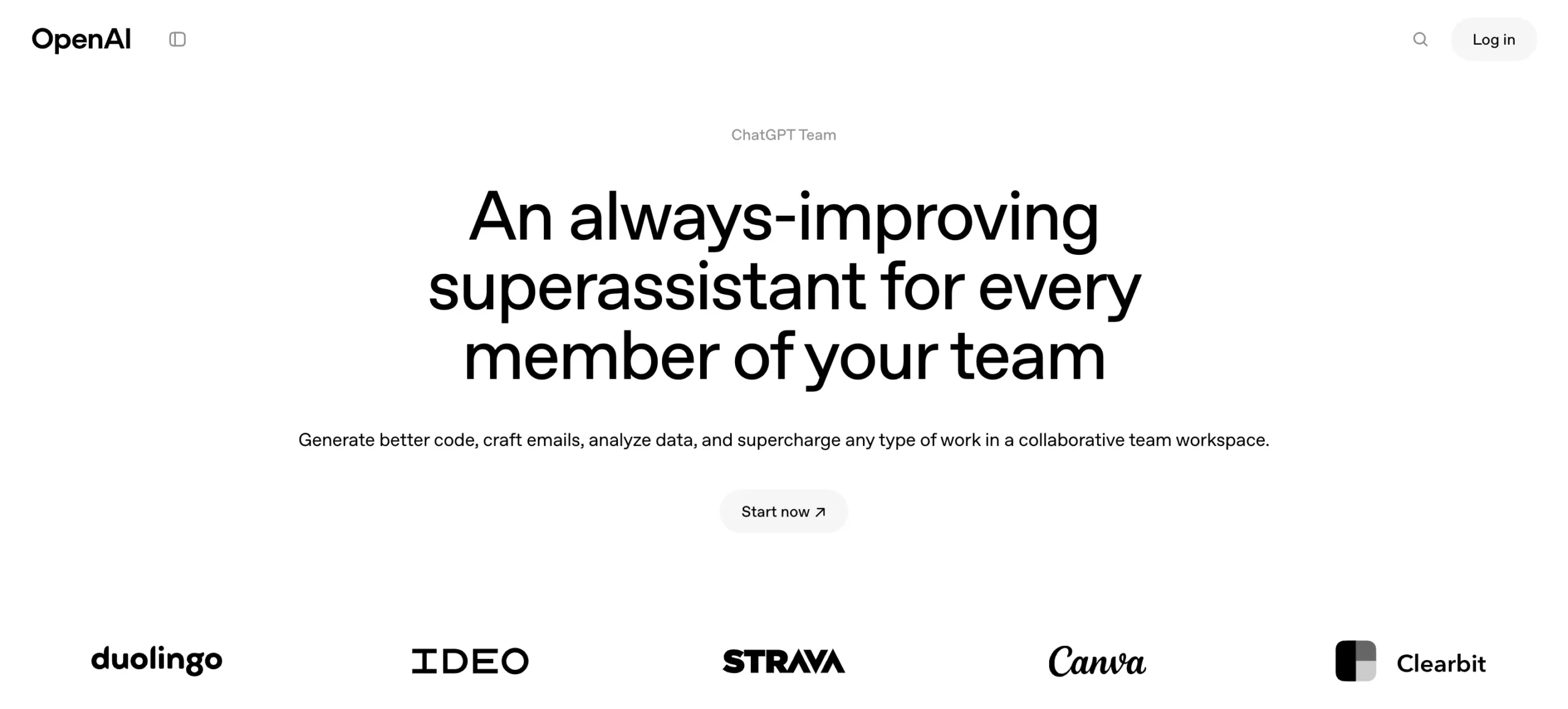
ChatGPT’s collaboration features extend beyond just sharing. They let teams create custom GPTs for specific departments or use cases.
Like Julius, ChatGPT also easily allows you to share your chats.
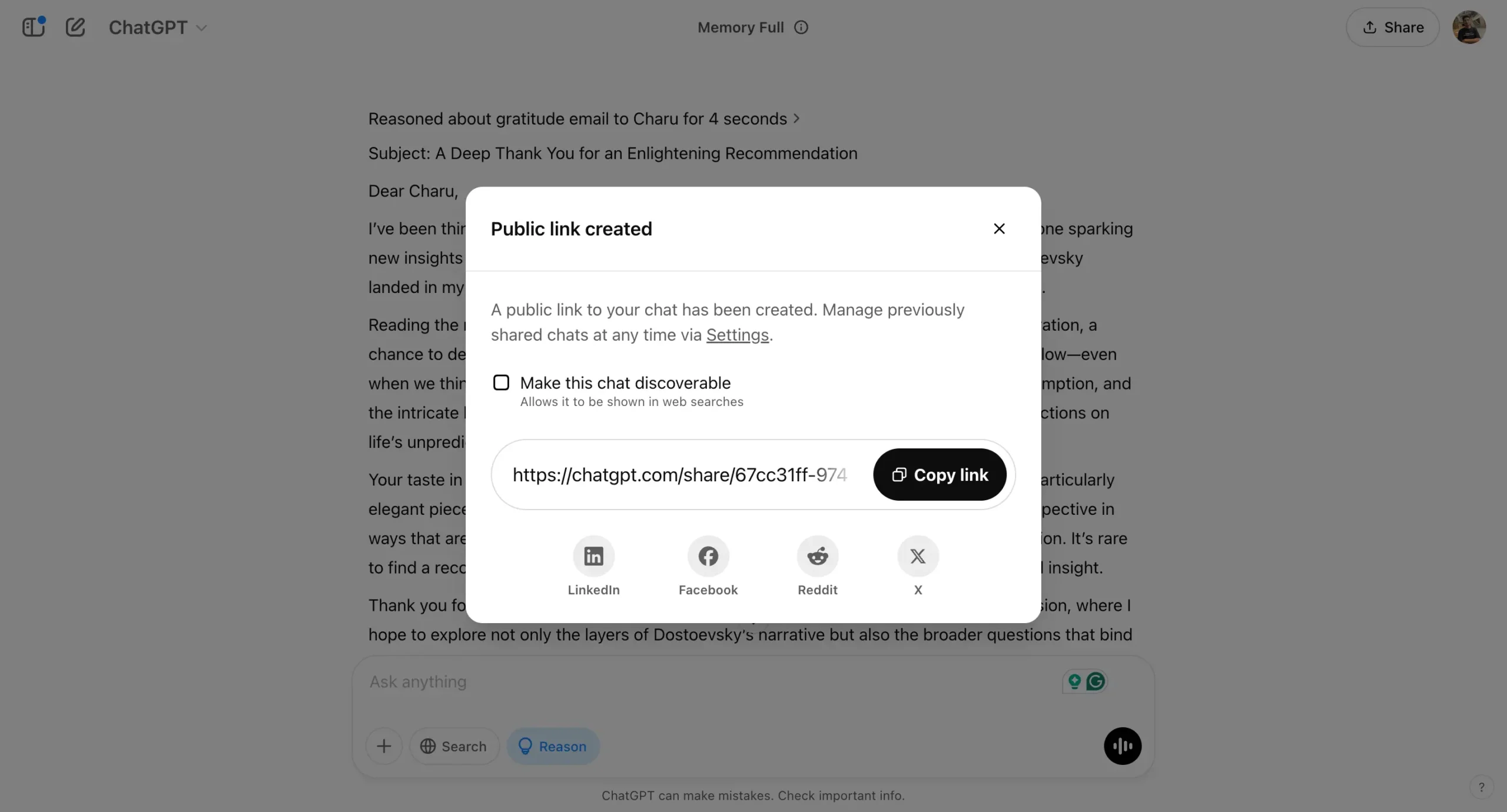
Notebook Templates vs. Custom GPTs
Customization reveals what a tool really values.
Julius gives you Notebook Templates—pre-built analysis workflows you can run and modify. ChatGPT offers Custom GPTs—specialized versions of the chatbot with specific personalities.
The difference runs deeper than naming.
Notebook Templates are organized around verbs: analyze, visualize, predict. They’re about doing things with data. Custom GPTs organize around nouns: the board game helper, the math teacher, the sticker designer. They’re about becoming something.
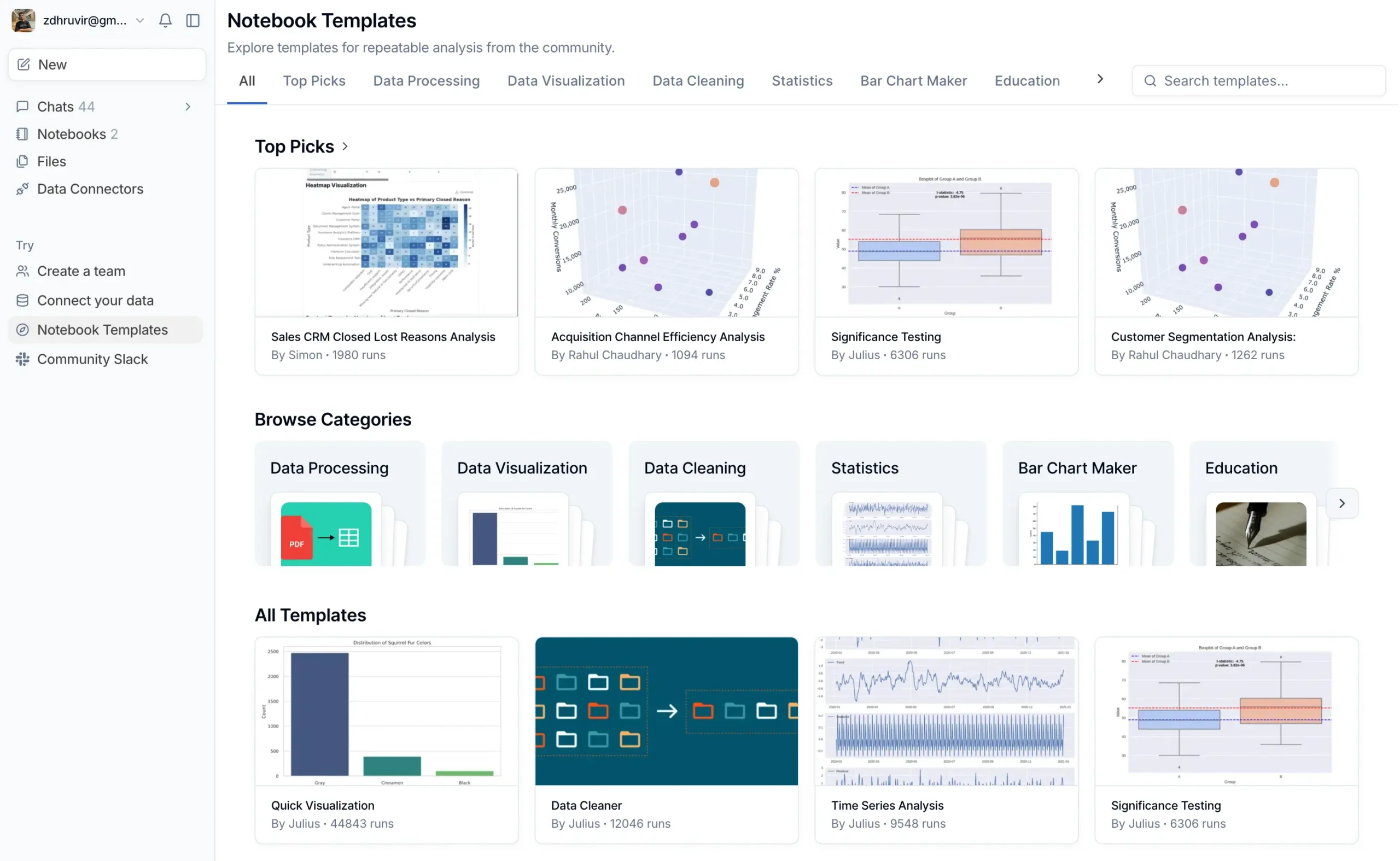
When you grab a Notebook Template in Julius, you get a sequence of steps. Upload file here. Clean data this way. Create chart like that. Each step is a cell you can modify, reorder, or replace.
You’re not just using someone else’s template. You’re learning their process, then making it yours.
Custom GPTs work differently. You’re creating a specialized assistant, not a process. “Act like a data scientist who focuses on retail analytics.”
You’re defining personality, not procedure.
Neither approach is wrong. But they solve different problems.
Julius’s approach matches how data work actually happens. You develop processes. Monthly sales reports follow the same steps. Customer segmentation uses similar methods. You want to codify these processes, not reinvent them.

Create your own Notebook once—with all the data cleaning, calculations, and visualizations you need. Save it as a template. Share it with your team. Schedule it to run automatically.
It’s like programming without coding. You’re telling Julius the exact sequence of steps to follow with your data.
ChatGPT’s Custom GPTs make sense for general tasks. You don’t need a step-by-step workflow to write a blog post. You need a collaborator who understands good writing.
But when I’m deep in data analysis, I don’t want an AI pretending to be a data scientist. I want one that knows the exact steps to transform my messy spreadsheet into actionable insights.
The philosophies are clear: Julius codifies processes. ChatGPT creates personalities.
For data work, processes win.
Price difference
Julius pricing reflects how seriously you take data analysis.
The Free plan gives you 15 messages per month and basic Notebooks access. It’s enough to test Julius, not enough to rely on it.
Plus costs $20/month ($16 if billed yearly). You get 250 messages, saved prompts, and 16GB RAM containers. This works for occasional data work.
Pro costs $45/month ($37 yearly). Unlimited messages, 32GB RAM, live database connections to Snowflake and BigQuery, and team collaboration. This is where serious data people land.
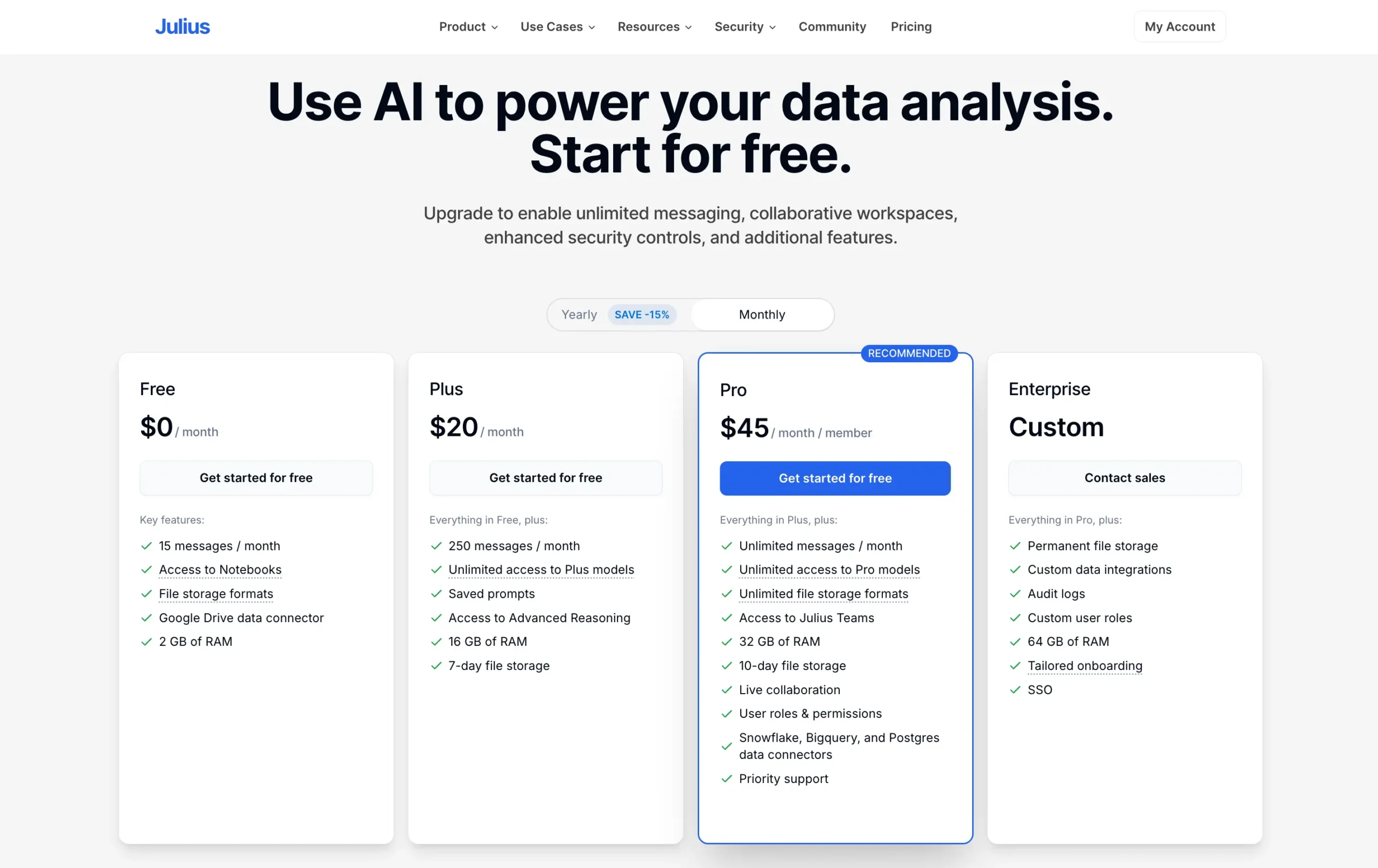
Enterprise is custom pricing for organizations that need audit logs and custom integrations.
The jump from Plus to Pro isn’t gradual—it’s a cliff. But that Pro plan includes the database connectors that eliminate file uploads entirely. Worth it if you work with live data regularly.
You can also use discount code DHRUVIR for 10% off any plan.
ChatGPT structures pricing differently.
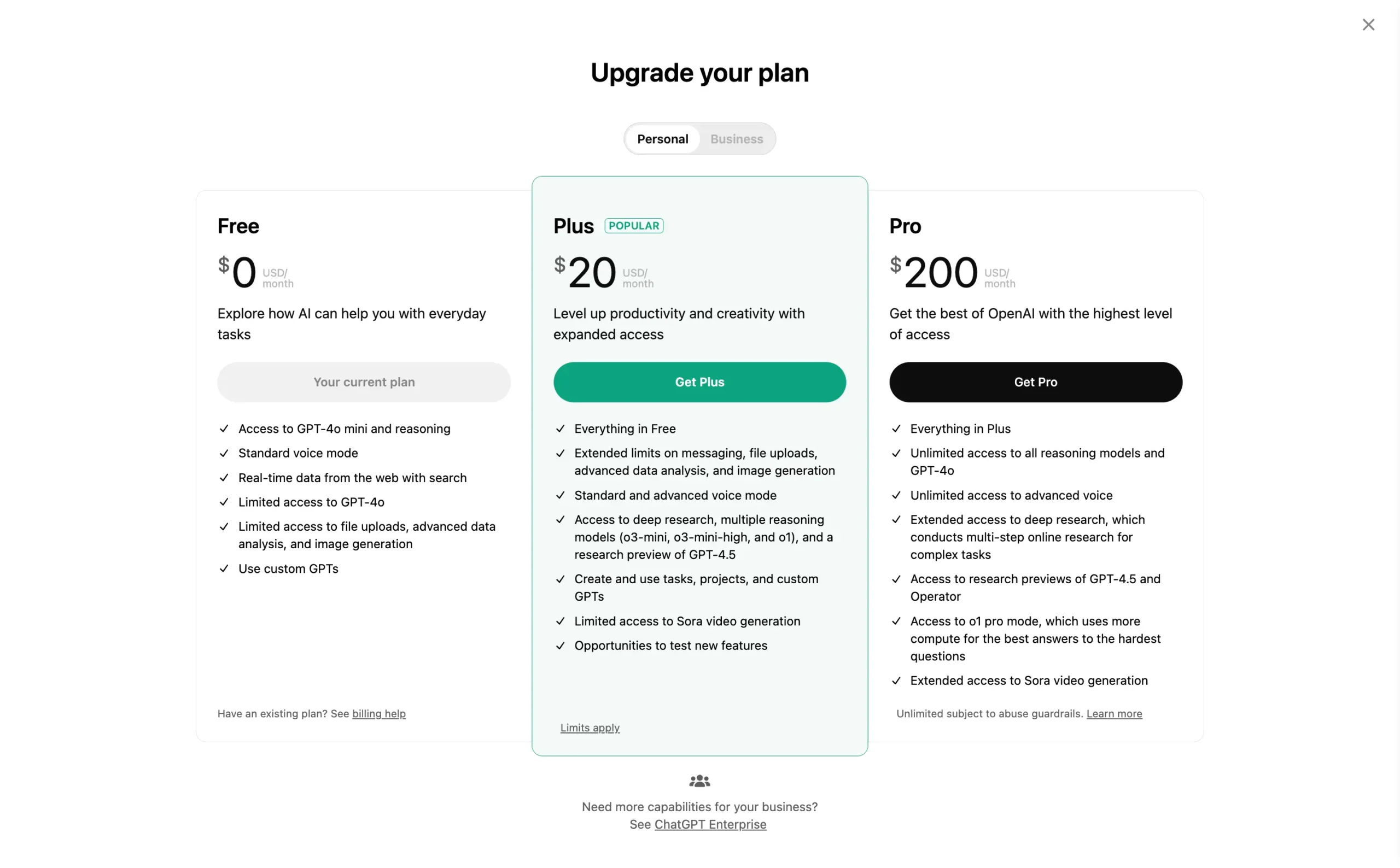
The free tier costs nothing. You get GPT-4o mini, standard voice mode, and web search.
For $20/month, Plus removes most limitations on file uploads, analysis, and image generation. You gain access to stronger reasoning models and voice options. This is where most people land.
The Pro plan jumps to $200/month. It’s basically unlimited everything: all reasoning models, voice features, GPT-4o access, and various research previews. They’re targeting power users who extract massive value.
For businesses, the Team plan costs $25/month per user (billed annually, a minimum of two members). It adds admin controls, encryption, and guarantees your data won’t train their models.
Tools cost what they’re worth to specific people, not what they cost to make.
Julius charges more than ChatGPT Plus because data specialists extract more value from it.
Julius AI vs. ChatGPT: And The Winner Is
There’s no single winner. Tools are good or bad at specific jobs.
If you analyze data regularly, Julius wins decisively. It’s become a complete data platform with Notebooks, Data Connectors, and Data Explorer.
ChatGPT wins for text work. Writing, rewriting, brainstorming—it understands language nuances Julius can’t match.
Your decision: What problems do you solve most often?
Work with data daily? Get Julius.
Write or brainstorm regularly? Get ChatGPT.
Do both?
Start with Julius if data analysis matters to your work. The gap has widened—Julius isn’t just specialized ChatGPT anymore.
Disclosure: Our content is reader-supported. If you click on certain links we may make a commission.
Meet your guide
Dhruvir Zala
I help businesses and professionals stop wasting money on the wrong software. Most software reviews are just marketing in disguise. So I started writing the reviews I wish I had: thoroughly tested, brutally honest, and focused on what matters.

Your data has the answers. You just can’t get to them.
You’ve got a CSV with 10,000 rows. Your boss wants insights by EOD. You could spend 3 hours writing VLOOKUP formulas. Or you could upload it to Julius AI and just ask: “What are the top trends here?” It answers in 10 seconds. In plain English. No code. No formulas. Just the answer you needed.
Use code DHRUVIRCode copied! for 10% off after your free trial